Nicole schreibt...
Nürnberg 2024 |
 |
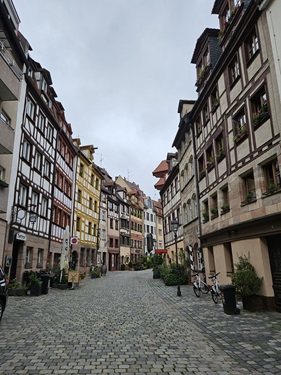 Normally I tend to use the stretch of bank holidays in May for some days on the sunny Mediterranean, but this year I found myself both at a loss of where to go and not really keen on the hassle of airports, transfer and flying. So I remembered that for years now I’ve been waiting to see Nürnberg in the southeast of Germany – a city full of history, but rarely doing musicals, which are the main reasons for traipsing around Germany. So while I’ve traveled plenty for shows and often manage to include little bits of sightseeing, I’ve never done a proper sightseeing city trip inside Germany and this seemed as good a place to start as any. Which also meant throwing in my lot with much maligned Deutsche Bahn. Who seemed eager to do a bit of image repair, because the direct train from Cologne to Nürnberg was on time (and even caught up on a small delay in Frankfurt), clean, I had two seats to myself and even the bogs were still usable after three hours.
I took the tram to the hotel I had chosen slightly outside of the city centre because it came with a swimming pool and after a break there returned – funny enough to see a musical after all. But first I even had the chance to meet a lovely local guy and fellow musical lover, which made a nice change from most German musical fans who absolutely don’t seem to care about meeting new people.
Normally I tend to use the stretch of bank holidays in May for some days on the sunny Mediterranean, but this year I found myself both at a loss of where to go and not really keen on the hassle of airports, transfer and flying. So I remembered that for years now I’ve been waiting to see Nürnberg in the southeast of Germany – a city full of history, but rarely doing musicals, which are the main reasons for traipsing around Germany. So while I’ve traveled plenty for shows and often manage to include little bits of sightseeing, I’ve never done a proper sightseeing city trip inside Germany and this seemed as good a place to start as any. Which also meant throwing in my lot with much maligned Deutsche Bahn. Who seemed eager to do a bit of image repair, because the direct train from Cologne to Nürnberg was on time (and even caught up on a small delay in Frankfurt), clean, I had two seats to myself and even the bogs were still usable after three hours.
I took the tram to the hotel I had chosen slightly outside of the city centre because it came with a swimming pool and after a break there returned – funny enough to see a musical after all. But first I even had the chance to meet a lovely local guy and fellow musical lover, which made a nice change from most German musical fans who absolutely don’t seem to care about meeting new people.
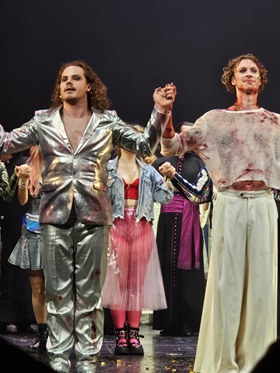
After a coffee and a chat I moved on to Nürnberg’s Staatstheater, an imposing building nearby that was doing Jesus Christ Superstar. Someone had texted me in a huff some time ago about a “godawful Regietheater version that totally ruined the show!” and while I generally despise Germany’s Regietheater with a passion, this one fell under “so crazy, it’s good again” and I was delighted to realize that I could catch a performance while in town, though only on this first evening. What had they done? It’s not the first time a director had moved the plot to today (van Hove did the same in the current Dutch tour with its barebones staging), but this one had firmly moved it to today’s Rome and the Vatican and Jesus having beef with the catholic church. Which, few minutes in, started to make perfect sense, given the atrocious state the church is in, which Jesus would most certainly wanted to clean up – brought home especially in the scene where Jesus throws the merchants out of the temple, in this case the priests and nuns flogging all sorts of Christian trinkets in the church. The high priests were cardinals now and Herod, of course, the Pope, bringing a completely new brilliance to his song. They also threw a lot of money on lavish stage sets that included St Peter’s main hall, the Sistine Chapel and a modern city apartment with a Pace flag in which Jesus seemed to live with Mary and a kid. Performances were brilliant all around too, with Lukas Mayer (who I had seen as Angel in Dortmund’s Rent last year) a terrific Jesus with a proper musical theatre voice and with his blonde curly hair a truly angelic appearance. This production really showed that creative new approaches CAN work when done well and the director (in this case musical theatre stalwart Andreas Gergen) knows what he’s doing. What a great start to this trip!
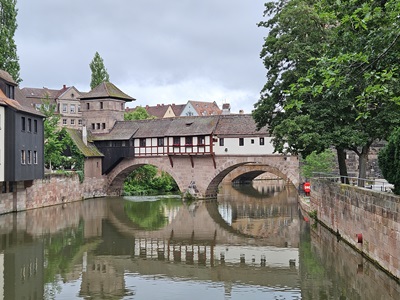 I had decided to spend 33 Euro on the Nürnberg Tourist Card, which included public transport and entry to more than two dozen museums and that proved to be the best investment ever, especially since Southern Germany was hit by endless downpours across my entire stay, so museums were the only place to be really. And luckily Nürnberg is full of them. In the morning after breakfast at the hotel I took the tram into town and first headed through the Old Town to Nürnberg’s famous castle which had partly been destroyed in WWII (along with most of the Old Town) but rebuilt since. It was a lovely amble there, across the Pegnitz river with its many old-style bridges and past the Hauptmarkt, with the Frauenkirche and the "pretty fountain" (yes, it's literally called Schöner Brunnen), with its 40 figures representing all sorts of people that mattered to the Holy Roman Empire. The square itself, which also borders the Town Hall, is most famous for hosting Nürnberg's Christkindlmarkt, one of the oldest and most famous christmas markets in Germany.
I had decided to spend 33 Euro on the Nürnberg Tourist Card, which included public transport and entry to more than two dozen museums and that proved to be the best investment ever, especially since Southern Germany was hit by endless downpours across my entire stay, so museums were the only place to be really. And luckily Nürnberg is full of them. In the morning after breakfast at the hotel I took the tram into town and first headed through the Old Town to Nürnberg’s famous castle which had partly been destroyed in WWII (along with most of the Old Town) but rebuilt since. It was a lovely amble there, across the Pegnitz river with its many old-style bridges and past the Hauptmarkt, with the Frauenkirche and the "pretty fountain" (yes, it's literally called Schöner Brunnen), with its 40 figures representing all sorts of people that mattered to the Holy Roman Empire. The square itself, which also borders the Town Hall, is most famous for hosting Nürnberg's Christkindlmarkt, one of the oldest and most famous christmas markets in Germany.
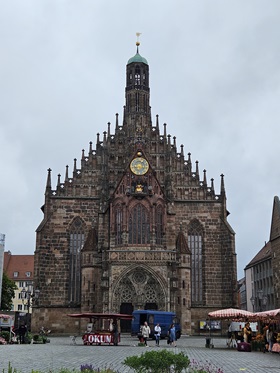
|
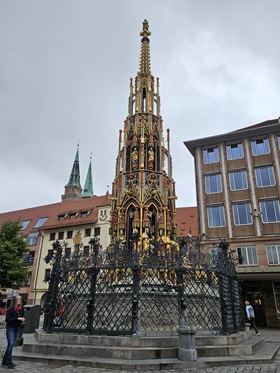
|
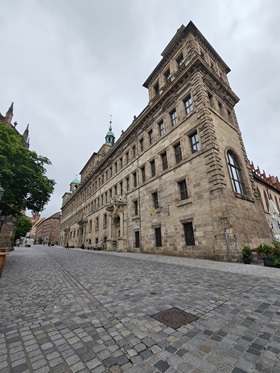 |
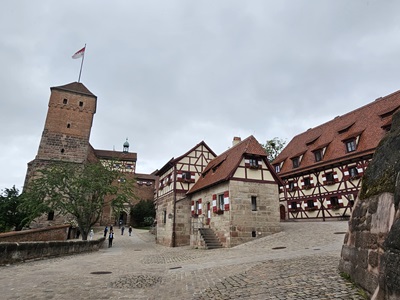 Since the history as a subject at school is incredibly badly taught in Germany, rushing through 2000 years within two years to then clobber kids with all that went wrong in 20th century for the next four years, my knowledge of medieval Germany and the Holy Roman Empire is admittedly rather wobbly. So I didn't even know that Nürnberg followed my own Aachen back home as the emperors' main base from 11th century on and built the imposing castle that still towers over the city. And which, sadly enough, was for many years my only reference point for Nürnberg because the skyline was always shown in the commercial of a Nürnberg-based insurance company. These days, one part of the castle, has been restored to house a museum/exhibition that gave me a crash course in medieval German history. Below are Charlemagne, my homie from Aachen, the imperial crown and one of the restored medieval ceilings.
Since the history as a subject at school is incredibly badly taught in Germany, rushing through 2000 years within two years to then clobber kids with all that went wrong in 20th century for the next four years, my knowledge of medieval Germany and the Holy Roman Empire is admittedly rather wobbly. So I didn't even know that Nürnberg followed my own Aachen back home as the emperors' main base from 11th century on and built the imposing castle that still towers over the city. And which, sadly enough, was for many years my only reference point for Nürnberg because the skyline was always shown in the commercial of a Nürnberg-based insurance company. These days, one part of the castle, has been restored to house a museum/exhibition that gave me a crash course in medieval German history. Below are Charlemagne, my homie from Aachen, the imperial crown and one of the restored medieval ceilings.
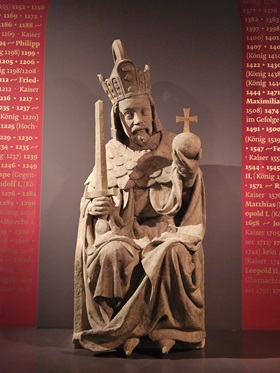
|

|
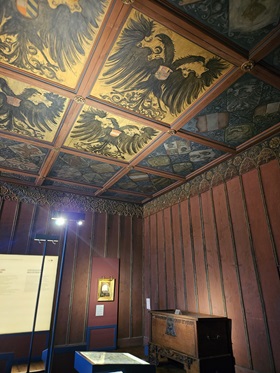 |
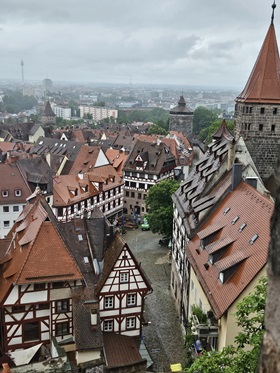
|
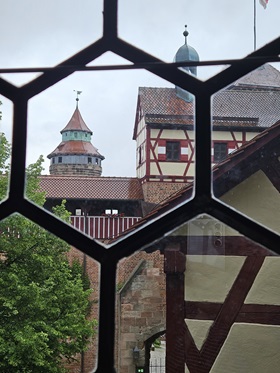
|
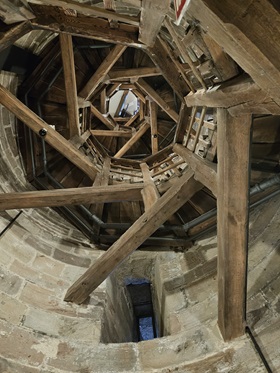 |
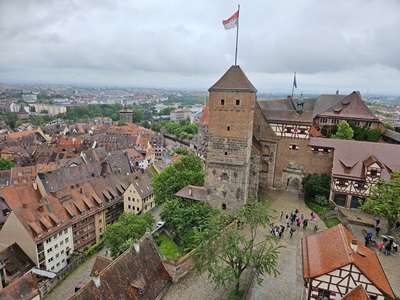 Naturally the castle windows kept offering beautiful views all around and you could climb up the Simwellturm, the main tower of the castle, via the wooden spiral to enjoy an even better open-air view all over the city (with not much of a view in this rainy weather and the upper level of the tower was closed completely because falcons were nesting there!). On the whole it felt very rewarding - I had come merely for a beautifully restored medieval castle and stayed for learning quite a bit about the Holy Roman Empire!
Another area where I feel that Germany is really letting itself down is its lack of appreciation for world-wide famous artists of yesteryear that barely get much recognition in the public consciousness. I felt this when visiting the Beethovenhaus in Bonn last year and I felt it again now when I made my way to the next big sight in Nürnberg, the Dürerhaus, the house in which painter Albrecht Dürer lived and worked from 1509 to 1528. The man is mostly famous now for his folded "praying hands" that are the favourite motive for memorial cards at funerals, despite having done so much more and counting among the foremost artists of the Renaissance. Most of his paintings live in Munich now, but the house itself was also nice to see, giving an impression of how people lived in early 16th century.
Naturally the castle windows kept offering beautiful views all around and you could climb up the Simwellturm, the main tower of the castle, via the wooden spiral to enjoy an even better open-air view all over the city (with not much of a view in this rainy weather and the upper level of the tower was closed completely because falcons were nesting there!). On the whole it felt very rewarding - I had come merely for a beautifully restored medieval castle and stayed for learning quite a bit about the Holy Roman Empire!
Another area where I feel that Germany is really letting itself down is its lack of appreciation for world-wide famous artists of yesteryear that barely get much recognition in the public consciousness. I felt this when visiting the Beethovenhaus in Bonn last year and I felt it again now when I made my way to the next big sight in Nürnberg, the Dürerhaus, the house in which painter Albrecht Dürer lived and worked from 1509 to 1528. The man is mostly famous now for his folded "praying hands" that are the favourite motive for memorial cards at funerals, despite having done so much more and counting among the foremost artists of the Renaissance. Most of his paintings live in Munich now, but the house itself was also nice to see, giving an impression of how people lived in early 16th century.
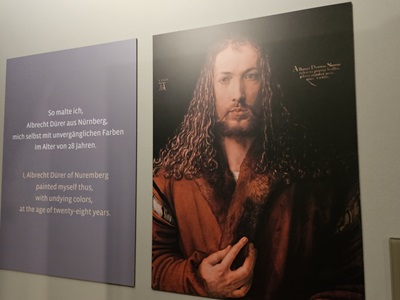
|
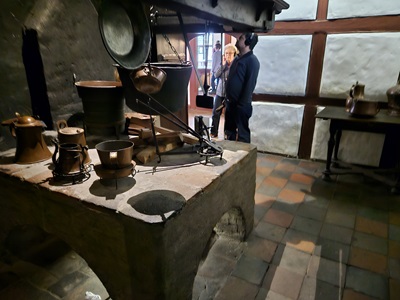 |
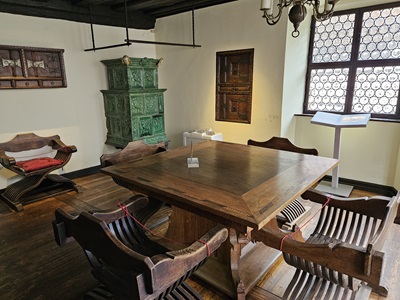
|
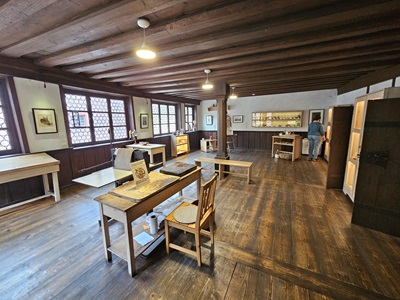 |
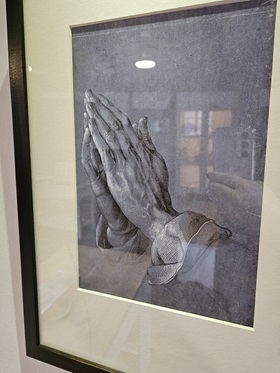
|
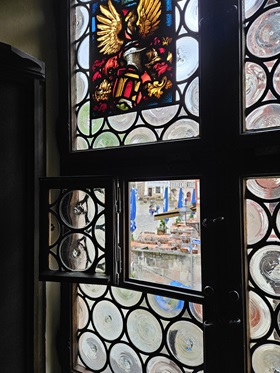
|
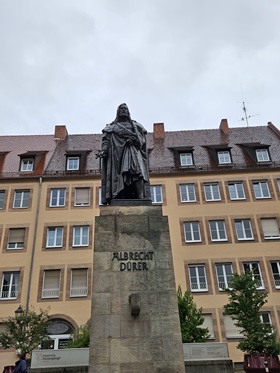 |
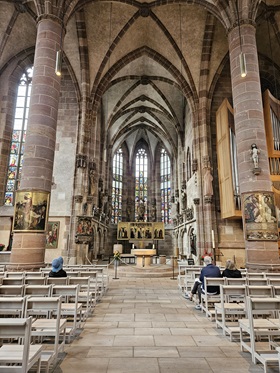
|
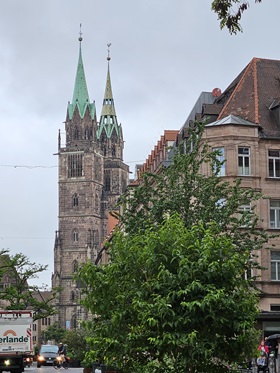
|
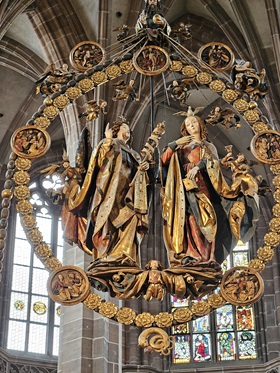 |
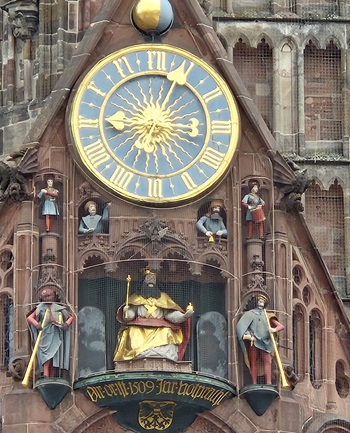 I had timed my walk so that I would be back at the Hauptkirche (above left) at noon when the "imperial train" within the clock tower would spring into action with figures playing music and coming out and going back in, then visited the church proper and moved on to the majestic Lorenzkirche nearby. This one and the Sebalduskirche were Nürnberg's big medieval gothic churches, the Frauenkirche followed a century later. And despite Bavaria being staunchly catholic, only the Frauenkirche is now catholic, the two biggies went protestant after the Reformation. Which doesn't stop the Lorenzkirche from being a truly beautiful building, stuffed with many gorgeous altars and this wooden sculpture that Veit Stoß created in 1518 and pictures Gabriel showing up to tell Mary that she's up the duff.
Since it still felt too early for lunch and going back to the hotel, I decided to take further advantage of the tourist card and popped into Nürnberg's Toy Museum, which proved to be a joyous journey down memory lane. Nürnberg is home to some of Germany's most famous toy brands, including Playmobil, which I loved to play with as a kid, represented here by the pirate ship and many other small pieces, some of which I actually owned myself! They also had gorgeous toys from across the decades including ancient toy shops and doll houses and this barf-inducing board game from around 1900, teaching girls how to be "good little housewives".
I had timed my walk so that I would be back at the Hauptkirche (above left) at noon when the "imperial train" within the clock tower would spring into action with figures playing music and coming out and going back in, then visited the church proper and moved on to the majestic Lorenzkirche nearby. This one and the Sebalduskirche were Nürnberg's big medieval gothic churches, the Frauenkirche followed a century later. And despite Bavaria being staunchly catholic, only the Frauenkirche is now catholic, the two biggies went protestant after the Reformation. Which doesn't stop the Lorenzkirche from being a truly beautiful building, stuffed with many gorgeous altars and this wooden sculpture that Veit Stoß created in 1518 and pictures Gabriel showing up to tell Mary that she's up the duff.
Since it still felt too early for lunch and going back to the hotel, I decided to take further advantage of the tourist card and popped into Nürnberg's Toy Museum, which proved to be a joyous journey down memory lane. Nürnberg is home to some of Germany's most famous toy brands, including Playmobil, which I loved to play with as a kid, represented here by the pirate ship and many other small pieces, some of which I actually owned myself! They also had gorgeous toys from across the decades including ancient toy shops and doll houses and this barf-inducing board game from around 1900, teaching girls how to be "good little housewives".
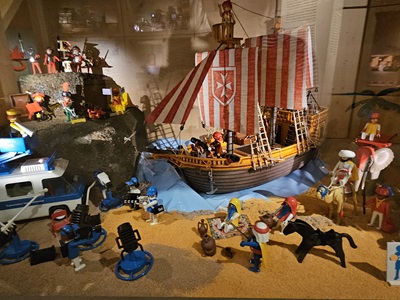
|
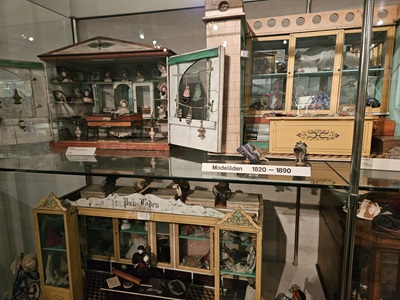 |
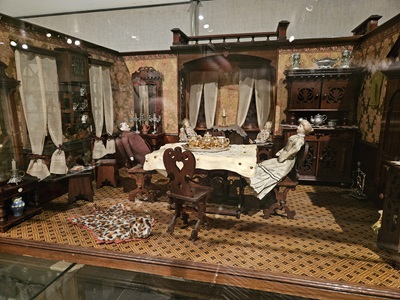
|
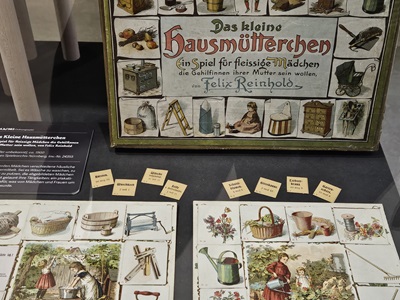 |
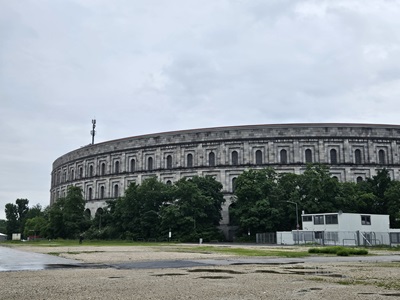 I had purposely booked a hotel with a pool and sauna for a chance to chill for some time, which turned out to the best decision ever given the abysmal weather. And while the initial plan had been to take a longer break there after lunch and then head out again, I knew that once I was parked at the pool, I would not get up again. So instead I soldiered on for the second part of today's sightseeing tour straightaway and the most depressing one: The Reichsparteitagsgelände south of the city, where Hitler hosted his massive rallies in the 1930s. His plan had been an expansive area full of grandiose buildings, but not many were actually built and those that were, were torn down after the war, repurposed (like the stadium, now the football stadium) or left to decay.
One that has been left standing, is the Kongresshalle, based on the Theatre of Marcellus in Ancient Rome, which was never finished. Nürnberg, rather unsure what to do with its awkward inheritance, used it for storage for decades, until by 2001 they decided to at least open an exhibition documenting the past of the area and now it's going to be used as a temporal replacement home for Nürnberg's opera while the main building gets a big refurb. With lots of building work necessary, the main museum was now closed and the most important bits moved to one large hall. With all the scary shit going on in Europe right now, it felt more important than ever to document the rise of the nazi party in general and the effect Hitler's large propaganda rallies had on the people.
I had purposely booked a hotel with a pool and sauna for a chance to chill for some time, which turned out to the best decision ever given the abysmal weather. And while the initial plan had been to take a longer break there after lunch and then head out again, I knew that once I was parked at the pool, I would not get up again. So instead I soldiered on for the second part of today's sightseeing tour straightaway and the most depressing one: The Reichsparteitagsgelände south of the city, where Hitler hosted his massive rallies in the 1930s. His plan had been an expansive area full of grandiose buildings, but not many were actually built and those that were, were torn down after the war, repurposed (like the stadium, now the football stadium) or left to decay.
One that has been left standing, is the Kongresshalle, based on the Theatre of Marcellus in Ancient Rome, which was never finished. Nürnberg, rather unsure what to do with its awkward inheritance, used it for storage for decades, until by 2001 they decided to at least open an exhibition documenting the past of the area and now it's going to be used as a temporal replacement home for Nürnberg's opera while the main building gets a big refurb. With lots of building work necessary, the main museum was now closed and the most important bits moved to one large hall. With all the scary shit going on in Europe right now, it felt more important than ever to document the rise of the nazi party in general and the effect Hitler's large propaganda rallies had on the people.
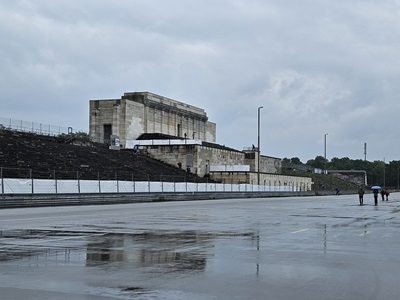 Another structure that partly survived is the Zeppelintribüne, where the man himself held his speeches, backed by his cronies. It's also slowly falling apart, since once again Nürnberg doesn't seem to know what to do with it really. Here is an aerial view of the whole thing to offer a better view. Apart from the endless rain that made walking around the area a slog, it didn't help that major preparations were under way for the huge "Rock im Park" rock festival with pavilions, stands, trucks and cables everywhere, which also felt like a strange juxtaposition with the area itself. Whatever else there was to explore, including the gorgeous Dutzendteich (a recreational lake), fell foul of the weather and I was glad to finally hurry back to the hotel (at the corner of the huge area that also contains Nürnberg's football stadium and the trade fair) to chill.
Another structure that partly survived is the Zeppelintribüne, where the man himself held his speeches, backed by his cronies. It's also slowly falling apart, since once again Nürnberg doesn't seem to know what to do with it really. Here is an aerial view of the whole thing to offer a better view. Apart from the endless rain that made walking around the area a slog, it didn't help that major preparations were under way for the huge "Rock im Park" rock festival with pavilions, stands, trucks and cables everywhere, which also felt like a strange juxtaposition with the area itself. Whatever else there was to explore, including the gorgeous Dutzendteich (a recreational lake), fell foul of the weather and I was glad to finally hurry back to the hotel (at the corner of the huge area that also contains Nürnberg's football stadium and the trade fair) to chill.
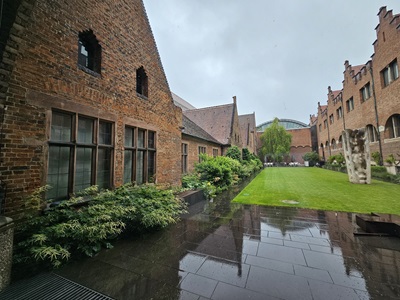
Another thing that had drawn me to Nürnberg was the Germanic National Museum, as it seems we exhibit every shard of Roman pottery ever found around here, but don't really have big museums focusing on our own history - except this one. Its core is a former medieval abbey, to which several other buildings were added later, making the museum absolutely MASSIVE and also rather tricky to navigate. Everything and the kitchen sink seems to have been stuffed into it and supposedly they are only exhibiting 25,000 objects out of 1,3 million they have tucked away somewhere! Since it was still endlessly raining in Nürnberg, I was actually glad to spend the whole morning there and got plenty to see.
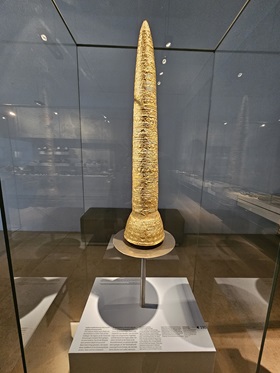
|
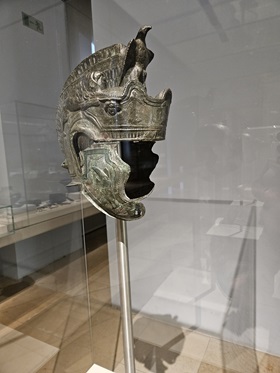
|
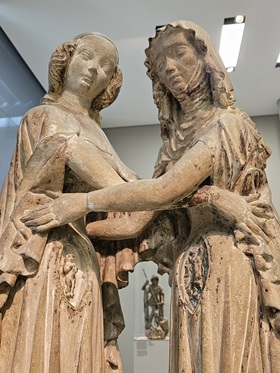 |
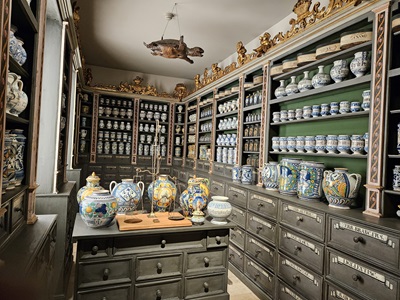
|
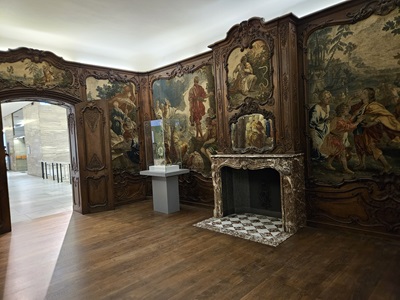 |
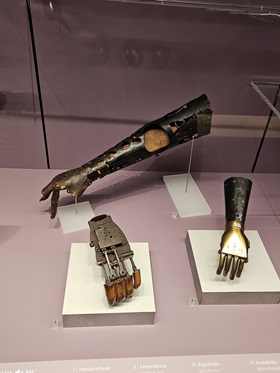
|
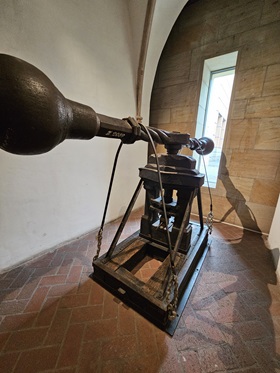
|
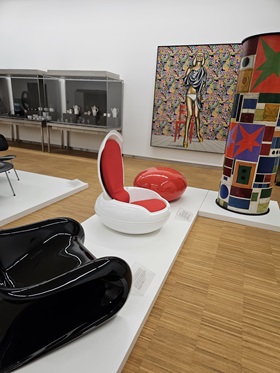 |
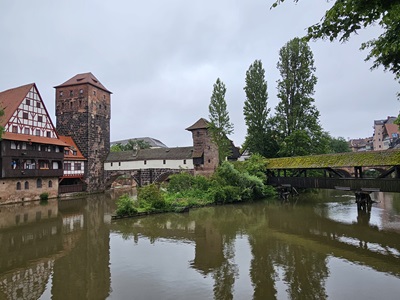 I was rewarded for the long trudge around the museum with the fact that it had finally stopped raining (at least for a while) so I could wander a bit around the old town and truly enjoy its atmosphere. I also finally made it to Nürnberg's most famous view, where the Henkersteg crosses the Pegnitz to a tiny island in the middle of the river. The name does mean "Hangman's pier" indeed - for the small white building on the right side was where Nürnberg's official hangman resided through the centuries as he wasn't allowed to live in the city among the proper people. His residence has now been transformed into a little museum about medieval "law and order" in town and thanks to my card I could take a quick peep for free and found it pretty informative. The tower on the right side is the Weinstadel, Nürnberg's medieval wine depot, so I suppose the hangman at least didn't have to walk far to drown the frustrations about his life.
I was rewarded for the long trudge around the museum with the fact that it had finally stopped raining (at least for a while) so I could wander a bit around the old town and truly enjoy its atmosphere. I also finally made it to Nürnberg's most famous view, where the Henkersteg crosses the Pegnitz to a tiny island in the middle of the river. The name does mean "Hangman's pier" indeed - for the small white building on the right side was where Nürnberg's official hangman resided through the centuries as he wasn't allowed to live in the city among the proper people. His residence has now been transformed into a little museum about medieval "law and order" in town and thanks to my card I could take a quick peep for free and found it pretty informative. The tower on the right side is the Weinstadel, Nürnberg's medieval wine depot, so I suppose the hangman at least didn't have to walk far to drown the frustrations about his life.
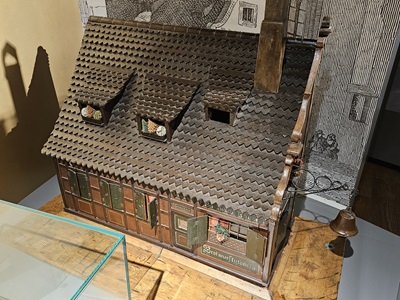 Almost literally next door on the charming small island was the Bratwurstmuseum, another of those small museums I'd normally not bother with, but could now peek in for free. Food-wise Nürnberg is famous for exactly two things: Lebkuchen, a sort of gingerbread mostly eaten in winter, and tiny sausages, the Nürnberger Rostbratwurst, which you really get everywhere there - either simply three or four stuffed into a breadroll or served on a plate in bigger numbers. The little museum documented its long history dating back to at least 1313, including this model of the first places that sold them to passing folks.
Neither of these two small museums had a toilet and it was raining again, so fate and necessity drove me to the next museum, which was also very close and which I would otherwise not have bothered with. The "Future Museum" is a dependance of Munich's Deutsche Museum, one of the biggest museums of technology and science worldwide and didn't seem my cup of tea, but since I was now there anyway I thought I may as well take a look. And boy was I glad that I did!
Almost literally next door on the charming small island was the Bratwurstmuseum, another of those small museums I'd normally not bother with, but could now peek in for free. Food-wise Nürnberg is famous for exactly two things: Lebkuchen, a sort of gingerbread mostly eaten in winter, and tiny sausages, the Nürnberger Rostbratwurst, which you really get everywhere there - either simply three or four stuffed into a breadroll or served on a plate in bigger numbers. The little museum documented its long history dating back to at least 1313, including this model of the first places that sold them to passing folks.
Neither of these two small museums had a toilet and it was raining again, so fate and necessity drove me to the next museum, which was also very close and which I would otherwise not have bothered with. The "Future Museum" is a dependance of Munich's Deutsche Museum, one of the biggest museums of technology and science worldwide and didn't seem my cup of tea, but since I was now there anyway I thought I may as well take a look. And boy was I glad that I did!
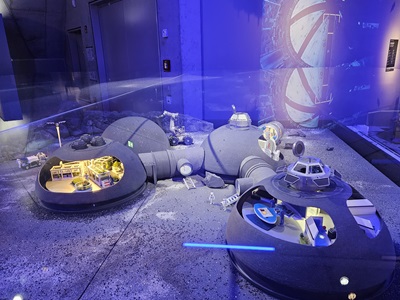 The top floor was dedicated to space exploration, explaining what mankind had already done and what was dreamed of (and how this could possibly be achieved). Here's a model of a potential settlement on Mars including living spaces, work spaces, labs and so on, plus satellites across the decades (and ideas how to clean up the massive junk that's now floating around the planet). German astronaut Alexander Gerst who spent some time on the ISS had donated a spacesuit, space food and other bits I found really fascinating (and so different from everything sci-fi movies depict).
But almost even more interesting where the two lower floors dedicated to all the problems mankind is facing now - climate change, the destruction of biodiversity, transformation of cities and mobility and so on. It was heartening to see, just how much has already been developed, is experimented with or even actually implemented worldwide to make sure that Earth will remain a liveable planet for all of us - reinforcing to me that if you really want to do something for the planet, study a scientific subject and work for a good future instead of pulling braindead nonsense like glueing yourself to the street or throwing paint at works of arts.
The top floor was dedicated to space exploration, explaining what mankind had already done and what was dreamed of (and how this could possibly be achieved). Here's a model of a potential settlement on Mars including living spaces, work spaces, labs and so on, plus satellites across the decades (and ideas how to clean up the massive junk that's now floating around the planet). German astronaut Alexander Gerst who spent some time on the ISS had donated a spacesuit, space food and other bits I found really fascinating (and so different from everything sci-fi movies depict).
But almost even more interesting where the two lower floors dedicated to all the problems mankind is facing now - climate change, the destruction of biodiversity, transformation of cities and mobility and so on. It was heartening to see, just how much has already been developed, is experimented with or even actually implemented worldwide to make sure that Earth will remain a liveable planet for all of us - reinforcing to me that if you really want to do something for the planet, study a scientific subject and work for a good future instead of pulling braindead nonsense like glueing yourself to the street or throwing paint at works of arts.
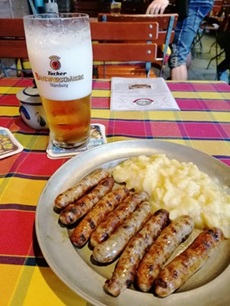
On this heartening upbeat note I finally ended my second sightseeing tour and crashed into the Bratwursthäusle, the wurst restaurant that's now on the site of the medieval wurst house shown above, to have a go at Rostbratwurst and Bavarian beer myself. It was a fitting end to a short but intense trip, before I returned to the hotel for another few hours at the pool and in the sauna, before heading home the next morning. This time the Bahn was more its usual self with a 75 minute delay by the time I reached Cologne, but nonetheless it was a rewarding way to travel and overall I had a great time with the friendly folks of Nürnberg and the town (which would have had even more sights to offer, had I stayed longer) was definitely worth planning my first-ever city trip inside Germany for!
Copyright © All Rights Reserved